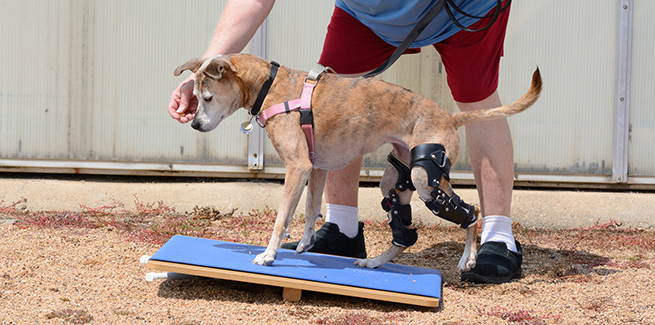Data on the consequences of early sterilization continues to mount

Researchers at the University of California, Davis (UC Davis), had a busy July: They published two separate studies on the health risks associated with early neutering and spaying of dogs.
One study focused on 35 specific dog breeds, the other on mixed-breed dogs. The first study found that health risks based on sterilization age varied widely depending on breed. Both found that heavier dogs have higher health risks if neutered or spayed early before the age of one year.
These findings are in line with the 2019 AAHA Canine Life Stage Guidelines, which recommend neutering large-breed male dogs after growth stops (approximately 9–15 months of age). Recommendations for female dogs are more nuanced and require clinical discretion combined with comprehensive owner education in an effort to balance the benefit of decreasing mammary neoplasia and unwanted litters when done earlier (before the first estrus) versus decreasing the risk of orthopedic disease, some cancers, and urethral sphincter mechanism incompetence if performed later (after growth stops).*
NEWStat reached out to Benjamin Hart, DVM, PhD, professor emeritus at the UC Davis School of Veterinary Medicine, and the lead author of both studies, to find out more.
Hart said his interest in the topic was piqued 10 years ago by the findings of several previous studies that suggested neutering and spaying could increase the risk of certain cancers such as lymphoma or hemangiosarcoma, as well as the risk of joint disorders such as cranial cruciate ligament rupture or hip dysplasia.
However, Hart said, those studies didn’t mention what breeds the researchers studied, or even the ages of the dogs at the time of sterilization.
“The information wasn’t clinically useful,” Hart said.
So he launched a 10-year study that looked at breed differences using 15 years of data from thousands of dogs at the UC Davis Veterinary Medical Teaching Hospital.
“We found major breed differences and even sex differences in disease risk,” he said. They decided to focus their studies on 35 breeds that showed significant differences. Hart and his colleagues discovered that in some larger breeds, the risk of a joint disorder could be three to four times greater than in dogs left intact. The risk of cancers was unchanged.
Other than the unchanged risk of cancers, Hart said sterilization wasn’t associated with an increase in joint disorders in small dogs.
The second study grew out of the first, said Hart: “Once we got about two-thirds through the purebred paper, we decided we needed to do something with mixed-breed dogs, since most pet breeds are mixed.”
The mixed-breed study examined dogs in five weight categories. “For dogs weighing 43 pounds and over, [sterilization] at the age of 6 to 11 months correlated with a major increase in risk for one or more joint disorders.” However, as with small-breed dogs, [sterilization] did not increase the risk of the cancer in any weight category.
Hart says his team’s findings are significant, especially in the case of mixed-breed shelter adoptions: Figuring out how big a dog might get is problematic if you don’t know anything about his parents, which can complicate questions about when best to sterilize.
To account for that uncertainty, Hart suggested that shelters and humane societies should consider adopting a standard of sterilizing at over a year of age for dogs who will grow into large sizes.
If you’re attending Connexity, don’t miss “Hey Doc, When Should I Spay my Dog?” Highlights from the Reproductive Health Section of the 2019 AAHA Canine Life Stage Guidelines for more information on this topic.
* This will continue to be a source of controversy in the profession and more data is needed to make breed-specific recommendations.
Photo credit: © Gettyimages/Merriman



